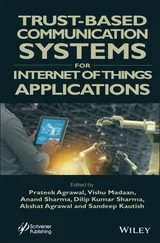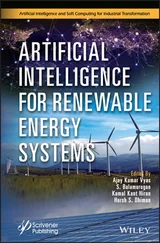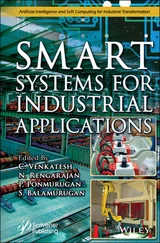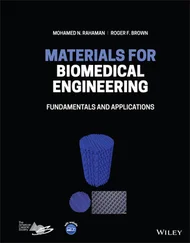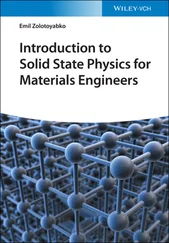Intelligent Systems for Rehabilitation Engineering
Здесь есть возможность читать онлайн «Intelligent Systems for Rehabilitation Engineering» — ознакомительный отрывок электронной книги совершенно бесплатно, а после прочтения отрывка купить полную версию. В некоторых случаях можно слушать аудио, скачать через торрент в формате fb2 и присутствует краткое содержание. Жанр: unrecognised, на английском языке. Описание произведения, (предисловие) а так же отзывы посетителей доступны на портале библиотеки ЛибКат.
- Название:Intelligent Systems for Rehabilitation Engineering
- Автор:
- Жанр:
- Год:неизвестен
- ISBN:нет данных
- Рейтинг книги:4 / 5. Голосов: 1
-
Избранное:Добавить в избранное
- Отзывы:
-
Ваша оценка:
- 80
- 1
- 2
- 3
- 4
- 5
Intelligent Systems for Rehabilitation Engineering: краткое содержание, описание и аннотация
Предлагаем к чтению аннотацию, описание, краткое содержание или предисловие (зависит от того, что написал сам автор книги «Intelligent Systems for Rehabilitation Engineering»). Если вы не нашли необходимую информацию о книге — напишите в комментариях, мы постараемся отыскать её.
Encapsulates different case studies where technology can be used as assistive technology for the physically challenged, visually and hearing impaired.
Audience Intelligent Systems for Rehabilitation Engineering
Intelligent Systems for Rehabilitation Engineering — читать онлайн ознакомительный отрывок
Ниже представлен текст книги, разбитый по страницам. Система сохранения места последней прочитанной страницы, позволяет с удобством читать онлайн бесплатно книгу «Intelligent Systems for Rehabilitation Engineering», без необходимости каждый раз заново искать на чём Вы остановились. Поставьте закладку, и сможете в любой момент перейти на страницу, на которой закончили чтение.
Интервал:
Закладка:
6. Cardona, M., Destarac, M., Cena, C.G., Robotics for Rehabilitation: A State of the Ar, in: Exoskeleton Robots for Rehabilitation and Healthcare Devices , pp. 1–11, Springer, Singapore, 2020.
7. Pignolo, L., Robotics in neuro-rehabilitation. J. Rehabil. Med., 41 , 12, 955-960, 2009.
8. Krebs, H.I., Rehabilitation robotics: an academic engineer perspective, in: 2011 Annual International Conference of the IEEE Engineering in Medicine and Biology Society , 2011, August, IEEE, pp. 6709–6712.
9. Yakub, F., Khudzari, A.Z.M., Mori, Y., Recent trends for practical rehabilitation robotics, current challenges and the future. Int. J. Rehabil. Res., 37 , 1, 9–21, 2014.
10. Gelderblom, G.J., De Wilt, M., Cremers, G., Rensma, A., Rehabilitation robotics in robotics for healthcare; a roadmap study for the European Commission, in: 2009 IEEE International Conference on Rehabilitation Robotics , 2009, June, IEEE, pp. 834–838.
11. Rogers, E., Owens, D.H., Werner, H., Freeman, C.T., Lewin, P.L., Kichhoff, S., Lichtenberg, G., Norm optimal iterative learning control with application to problems in accelerator based free electron lasers and rehabilitation robotics. Eur. J. Control, 16 , 5, 497–524, 2010.
12. Pons, J.L., Rehabilitation exoskeletal robotics. IEEE Eng. Med. Biol. Mag., 29 , 3, 57–63, 2010.
13. Dai, J.S., Zhao, T., Nester, C., Sprained ankle physiotherapy based mechanism synthesis and stiffness analysis of a robotic rehabilitation device. Auton. Robots, 16 , 2, 207–218, 2004.
14. Loureiro, R.C. and Harwin, W.S., Reach & grasp therapy: design and control of a 9-DOF robotic neuro-rehabilitation system, in: 2007 IEEE 10th International Conference on Rehabilitation Robotics , 2007, June, IEEE, pp. 757–763.
15. Novak, D. and Riener, R., Control strategies and artificial intelligence in rehabilitation robotics. Ai Mag ., 36 , 4, 23-33, 2015.
16. Krebs, H.I., et al ., A paradigm shift for rehabilitation robotics. IEEE Eng. Med. Biol. Mag., 27 , 4, 61–70, 2008.
17. Hillman, M.R., Pullin, G.M., Gammie, A.R., Stammers, C.W., Orpwood, R.D., Clinical experience in rehabilitation robotics. J. Biomed. Eng., 13 , 3, 239–243, 1991.
18. Brunetti, F., Garay, A., Moreno, J.C., Pons, J.L., Enhancing functional electrical stimulation for emerging rehabilitation robotics in the framework of hyper project, in: 2011 IEEE International Conference on Rehabilitation Robotics , 2011, June, IEEE, pp. 1–6.
19. Dogmus, Z., Papantoniou, A., Kilinc, M., Yildirim, S.A., Erdem, E., Patoglu, V., Rehabilitation robotics ontology on the cloud, in: 2013 IEEE 13th International Conference on Rehabilitation Robotics (ICORR) , 2013, June, IEEE, pp. 1–6.
20. Yap, H.K., Lim, J.H., Nasrallah, F., Low, F.Z., Goh, J.C., Yeow, R.C., MRC-glove: A fMRI compatible soft robotic glove for hand rehabilitation application, in: 2015 IEEE International Conference on Rehabilitation Robotics (ICORR) , 2015, August, IEEE, pp. 735–740.
21. Dogmus, Z., Erdem, E., Patoglu, V., RehabRobo-Query: Answering natural language queries about rehabilitation robotics ontology on the cloud. Semant. Web , 10 , 3, 605–629, 2019.
22. Sebastian, G., Li, Z., Crocher, V., Kremers, D., Tan, Y., Oetomo, D., Interaction Force Estimation Using Extended State Observers: An Application to Impedance-Based Assistive and Rehabilitation Robotics. IEEE Robot. Autom. Lett., 4 , 2, 1156–1161, 2019.
23. Krebs, H.I., Volpe, B., Hogan, N., A working model of stroke recovery from rehabilitation robotics practitioners. J. Neuroeng. Rehabil., 6 , 1, 6, 2009.
24. Berezny, N., Dowlatshahi, D., Ahmadi, M., Novel Concept of a Lower-limb Rehabilitation Robot Targeting Bed-bound Acute Stroke Patients. CMBES Proceedings , vol. 42, 2019.
25. Penalver-Andres, J., Duarte, J., Vallery, H., Klamroth-Marganska, V., Riener, R., Marchal-Crespo, L., Rauter, G., Do we need complex rehabilitation robots for training complex tasks?, in: 2019 IEEE 16th International Conference on Rehabilitation Robotics (ICORR) , 2019, June, IEEE, pp. 1085–1090.
26. Yu, K.P., Yeung, L.F., Ng, S.W., Tong, K.Y., Bionic robotics for post polio walking, in: Intelligent Biomechatronics in Neurorehabilitation , pp. 83–109, Cambridge, Massachusetts, Academic Press, 2020.
27. Tejima, N., Rehabilitation robotics: a review. Adv. Rob., 14 , 7, 551–564, 2001.
28. Hillman, M., 2 rehabilitation robotics from past to present–a historical perspective, in: Advances in Rehabilitation Robotics , pp. 25–44, Springer, Berlin, Heidelberg, 2004.
29. Fong, J., Ocampo, R., Gross, D.P., Tavakoli, M., Intelligent Robotics Incorporating Machine Learning Algorithms for Improving Functional Capacity Evaluation and Occupational Rehabilitation. J. Occup. Rehabil ., 30, 3, 362–370, 2020.
30. Mohammadi, A. and Dallali, H., Disturbance observer applications in rehabilitation robotics: an overview, in: Powered Prostheses , pp. 113–133, Cambridge, Massachusetts, Academic Press, 2020.
31. van Vliet, P. and Wing, A.M., A new challenge—robotics in the rehabilitation of the neurologically motor impaired. Phys. Ther., 71 , 1, 39–47, 1991.
32. Knestel, M., Hofer, E.P., Barillas, S.K., Rupp, R., The artificial muscle as an innovative actuator in rehabilitation robotics. IFAC Proc. Volumes , 41 , 2, 773–778, 2008.
33. Munih, M. and Bajd, T., Rehabilitation robotics. Technol. Healthcare, 19 , 6, 483–495, 2011.
34. Krebs, H.I., and Volpe, B.T., Rehabilitation robotics, in: Handbook of clinical neurology , vol. 110, pp. 283–294, Amsterdam, Elsevier, 2013.
35. Rosier, J.C. et al ., Rehabilitation robotics: The MANUS concept, in: Fifth International Conference on Advanced Robotics’ Robots in Unstructured Environments , 1991, June, IEEE, pp. 893–898.
36. Krebs, H.I., Palazzolo, J.J., Dipietro, L., Ferraro, M., Krol, J., Rannekleiv, K., Hogan, N., Rehabilitation robotics: Performance-based progressive robot-assisted therapy. Auton. Robots, 15 , 1, 7–20, 2003.
37. Riener, R., Frey, M., Bernhardt, M., Nef, T., Colombo, G., Human-centered rehabilitation robotics, in: 9th International Conference on Rehabilitation Robotics, 2005. ICORR 2005 , 2005, June, IEEE, pp. 319–322.
38. Weinberg, B., Nikitczuk, J., Patel, S., Patritti, B., Mavroidis, C., Bonato, P., Canavan, P., Design, control and human testing of an active knee rehabilitation orthotic device, in: Proceedings 2007 IEEE International Conference on Robotics and Automation , 2007, April, IEEE, pp. 4126–4133.
39. Chisholm, K.J., Klumper, K., Mullins, A., Ahmadi, M., A task oriented haptic gait rehabilitation robot. Mechatronics, 24 , 8, 1083–1091, 2014.
40. O’Neill, C. et al ., Inflatable soft wearable robot for reducing therapist fatigue during upper extremity rehabilitation in severe stroke. IEEE Rob. Autom. Lett ., 5 , 3, 3899–3906, 2020.
41. Kwee, H.H., Rehabilitation robotics-softening the hardware. IEEE Eng. Med. Biol. Mag., 14 , 3, 330–335, 1995.
42. Rocon, E., Belda-Lois, J.M., Ruiz, A.F., Manto, M., Moreno, J.C., Pons, J.L., Design and validation of a rehabilitation robotic exoskeleton for tremor assessment and suppression. IEEE Trans. Neural Syst. Rehabil. Eng., 15 , 3, 367–378, 2007.
43. Rocon, E., Moreno, J.C., Ruiz, A.F., Brunetti, F., Miranda, J.A., Pons, J.L., Application of inertial sensors in rehabilitation robotics, in: 2007 IEEE 10th International Conference on Rehabilitation Robotics , 2007, June, IEEE, pp. 145–150.
Читать дальшеИнтервал:
Закладка:
Похожие книги на «Intelligent Systems for Rehabilitation Engineering»
Представляем Вашему вниманию похожие книги на «Intelligent Systems for Rehabilitation Engineering» списком для выбора. Мы отобрали схожую по названию и смыслу литературу в надежде предоставить читателям больше вариантов отыскать новые, интересные, ещё непрочитанные произведения.
Обсуждение, отзывы о книге «Intelligent Systems for Rehabilitation Engineering» и просто собственные мнения читателей. Оставьте ваши комментарии, напишите, что Вы думаете о произведении, его смысле или главных героях. Укажите что конкретно понравилось, а что нет, и почему Вы так считаете.

